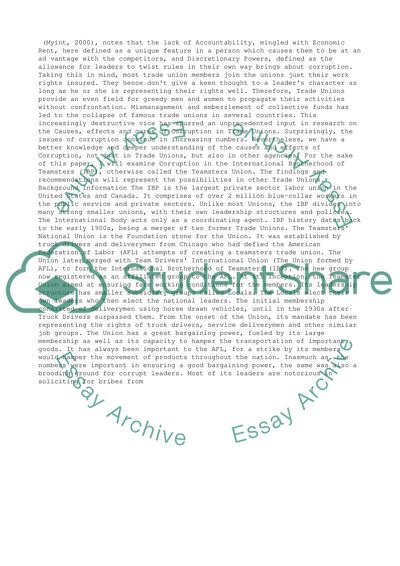Cite this document
(“Corruption in the Teamsters Union Essay Example | Topics and Well Written Essays - 3250 words”, n.d.)
Retrieved from https://studentshare.org/business/1402700-human-resources-labor-relation
Retrieved from https://studentshare.org/business/1402700-human-resources-labor-relation
(Corruption in the Teamsters Union Essay Example | Topics and Well Written Essays - 3250 Words)
https://studentshare.org/business/1402700-human-resources-labor-relation.
https://studentshare.org/business/1402700-human-resources-labor-relation.
“Corruption in the Teamsters Union Essay Example | Topics and Well Written Essays - 3250 Words”, n.d. https://studentshare.org/business/1402700-human-resources-labor-relation.


